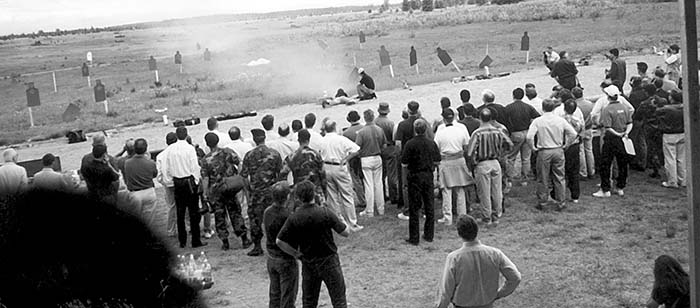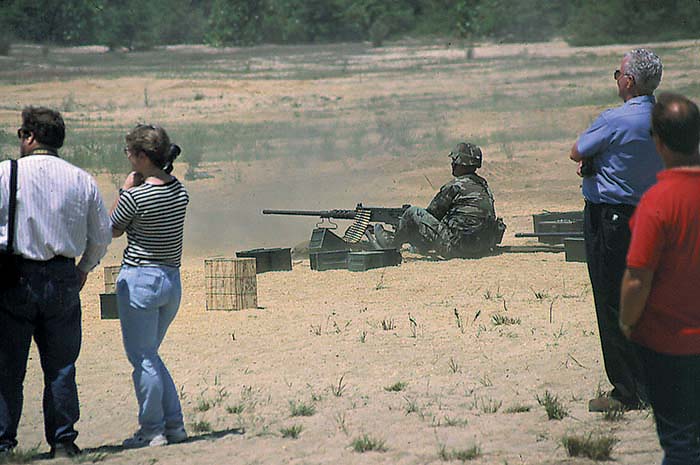In a demo you are really hanging it out in the breeze. You are solely responsible for your own success, or failure. Shooting a continuous 1000 round belt in front of a large crowd like this is very impressive but should never be attempted without successful trial runs and 100% confidence you will succeed.
By Jim Schatz
This article was written as a guide for dealers and manufacturers for conducting successful and safe demonstrations of small arms to all audiences, military, law enforcement and civilian personnel. These guidelines also apply to demos conducted by military and law enforcement personnel performing “dog and pony” shows for the public and other organizations and to anyone who travels regularly to crowded ranges and machine gun shoots.
This information is a compilation of the experiences and recommendations of the author and numerous members of the Heckler & Koch Inc. Federal Operations and Training Departments based on many years of conducting small arms demonstrations. The author alone has conducted more than 400 live-fire demonstrations during his 15 years of employment with HK, not to mention many similar demos conducted during a preceding 7 year military career. Like the fundamentals of marksmanship or the laws of physics, there are basics for conducting demonstrations that apply to any weapon, and to demos conducted at any location and for all audiences.
The recommendations provided herein will be most helpful for the novice demonstrator. The experienced demonstrator may find this information rudimentary. However it will still act as a refresher, a shake of the snow globe if you will, of the critical details for one of the most important, and dangerous, sales tools of those dealing in small arms, ammunition, and destructive devices. A demo, good, bad or otherwise can and will make or break the sale.
This article hopes to document and remind us all of what is important when conducting such demos and what can happen when Mr. Murphy jumps on board with both feet. It is hoped that these guidelines will help insure the conduct of safe and successful demonstrations, regardless of the level of experience of the demonstrator. At the same time this is not the gospel and many readers and experienced demonstrators will certainly be able to add to this list and may even question some of the recommendations and ideas. This is good; the author and readers welcome your input, as there are no absolutes in life.
Throughout the article true accounts will be provided as examples to reinforce the messages conveyed. While these tales are true the names have been changed to protect the innocent and to avoid embarrassment for the unfortunate individual involved in the story. Only a few of these examples come from the HK files.
Parts I and II of this four part series will cover General Guidelines for a Successful Demonstration. Part III will follow with tips concerning Specific Safety Guidelines and Precautions during demonstrations. Part IV will discuss Ammunition and Specific Weapon Guidelines.
The Definition of a Successful Demonstration
“A successful demonstration is a day where no one at the demo gets hurt, all the guns work as designed, you hit all your targets and, if you are a salesman the customer leaves with the intention to buy your product, in that order. Strive for perfection!”
Safety is the first concern but preparation is the key to a successful demonstration!
Even when you have done all that you can to insure a safe and 100% successful live-fire demonstration it is important to remember that many factors are simply out of your control.
Example 1:
An experienced manufacturer’s rep was asked to conduct a demo for a federal agency allegedly interesting in purchasing 100 long guns. Unbeknownst to the rep the prospective customer showed up at the demo with another manufacturer’s product and had been obviously coached by the manufacturers rep. Certain individuals from the agency used the demo to steer the decision-makers attending the demo away from the products of the rep invited to showcase his wares.
Lesson: Demos can be counterproductive to your goals due to outside influences beyond your control. It is very important to lay the groundwork and “know your enemy” before investing the time and effort to conduct the demonstration.
Without preparation there is anarchy. What can go wrong will go wrong during the demo. If you think it will take 30 minutes to prepare or set-up it will take 90 minutes.Being unprepared for the demo sets you up for failure. The degree of success obtained using the live-fire demonstration as a sales tool is directly proportional to the time you spend preparing for it. If you are prepared for the demo before arriving at the site of the demonstration not only can you concentrate on the objective of the visit but you will also be more attentive to safety concerns.
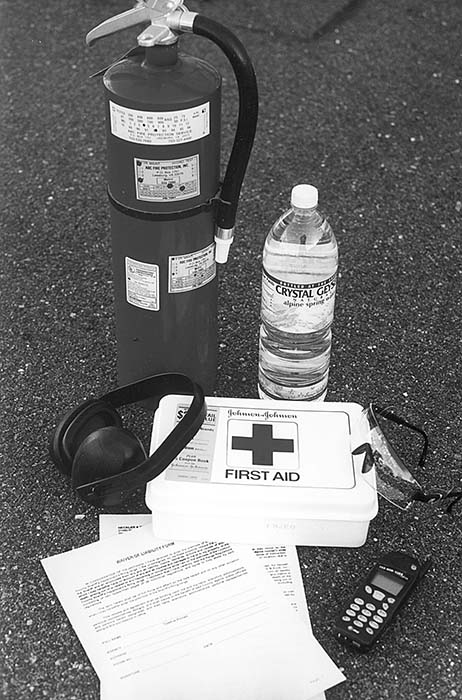
General Guidelines for a Successful Demonstration
•1. Safety is the first priority at any live fire demo! If all else goes perfect during your demo but someone is hurt as a result of your demo it is the injury the attendees will remember. Never shortcut or sacrifice safety when conducting a demonstration, for any reason.
•2. A demonstration is only successful when all (100%) of your weapons and accessories work flawlessly. Any stoppages or failures will most likely be seen and frowned upon by the onlookers and could jeopardize the outcome of the sale.
•3. Preparation is everything! Inspect and prepare your demo kit (weapons, magazines, belts, accessories, range materials, etc.) the day prior to the demo. Arrive at the site of the demo ready to shoot!
•4. Test fire and confirm the zero’s of your demo weapons the day of the demo and if possible on the range where the demo will occur. Arrive enough in advance to test fire and confirm your zeros before the attendees begin to arrive. Test firing just prior to the demo will provide as great a guarantee as possible that your weapons will function properly during the demo on that day and under those unique conditions. Test fire each weapon with one full magazine in all available modes of fire.
•5. Arrive 1 to 2 hours prior to the start of the demo for set up and preparation time. This will allow you sufficient time to test fire, confirm zeros, set up your firing line, refill magazines, lay out literature, post signs, etc. prior to the arrival of the attendees. Arriving early and being set up and ready to fire before the attendees arrive will show that you are prepared and organized. It will also allow you ample time to answer the questions of the early arrivals that may not be able to stay for the entire demo.
Early arrival also provides a buffer time for unexpected events, forgotten items and for the all-important mental preparation prior to precision error-free shooting.
•6. Know your products! Memorize specifications, features, prices prior to the demo.
•7. Know the prospective user, their current weapons and needs, the key players and obstacles or negative attitudes you may encounter as in example 1 above. Model your demo to address the unique requirements of the attendees of the demo. Set realistic goals for the day and strive to reach them.
•8. Avoid the urge to try and impress the attendees with your expansive knowledge of firearms. Concentrate on the merits of products you are showing and the needs of the customer.
•9. Don’t try to cover your entire product line in the time allotted unless the customer is seriously interested in buying everything you offer! Find out before the demo and concentrate on the weapons that the customer is most interested in. Select those primary weapons for live fire demonstration and leave the others for static display only. This reduces demo and cleaning time, ammo costs, the possibility for problems or safety issues with too many guns on line and most importantly allows you to concentrate on selling the weapons that the customer is most likely to buy.
•10. Keep the verbal briefing portion of the demo short, no longer than 20 minutes at a time. Most persons will only retain 30 – 50 % of your “sermon”, some far less depending on the conditions and their interest. If necessary, take breaks throughout the demo to speak to them on additional subjects/products. Dividing the demo into phases with a short briefing prior to each phase works very well. (I.e. talk about and shoot pistols, break, talk about and shoot sub guns/rifles, break, talk about and shoot shotguns, break, closing comments.)
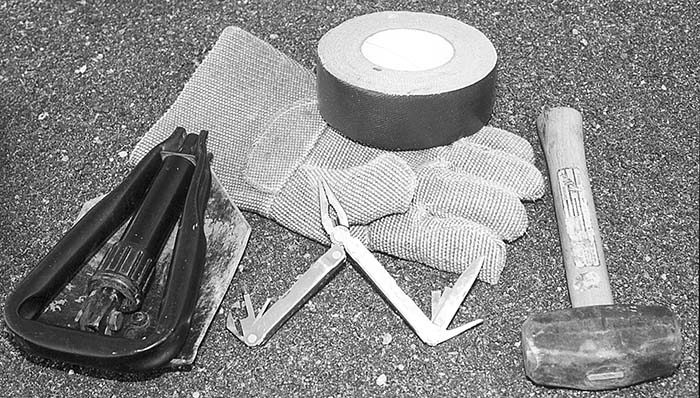
Include in your briefing the following information:
* Who you are and what you do for your company.
* Provide a brief description of your company and it’s relationship with any parent organizations, etc.
* Additional services provided by your company, i.e. repair, training, reconditioning, trade-in programs, programs to provide sample weapons for user test and evaluation, Individual Officer Sale Program, etc.
* Describe the products you will demo and a short bit on each one. Include at a minimum:
—Features and merits
—Operation
—Assembly/disassembly
—Accessories, options, variants, etc.
—Procedures for use and clearing
—Proper and effective firing position or methods
* Invite attendees to take literature, price lists, business cards, etc. after demo is completed.
* Invite attendees to test fire weapons at close of briefing.
* Offer and provide the loan of ear and eye protection to those without.
(Note: Yes they should bring their own but its your demo so be prepared to
protect the eyes and ears of those who didn’t think ahead to protect themselves.)
•11. Load your magazines and belts prior to arriving at the range to save time. Inspect, fit and adjust if necessary your holsters, belts, slings, rigs and equipment prior to leaving for the demo so you know they are ready for immediate use.
•12. Arrive at the demo with weapons that are clean, properly lubricated and prepared for the demo.
•13. Load, unload and fire the weapons in a correct and professional manner, in other words in the way that they would be loaded and fired during actual use. For example, load the long guns with the weapon in a firing position. Don’t load the rifles or shotguns with the weapon laying in your arms upside down to make the insertion of the shells/magazine more convenient for you. Practice your loading and manipulation of the weapons with inert dummy rounds prior to the demo until you can do it without fumbling or watching your hand motions.
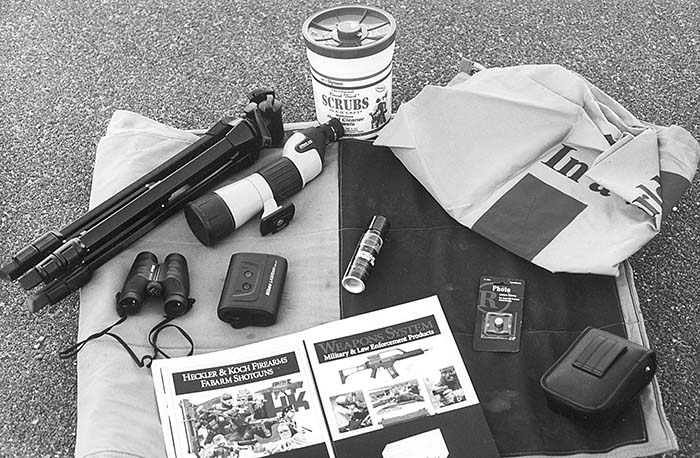
Example 2:
One of the finest shotgun demonstrators in the world today makes loading of the magazine look fast and easy through years of hands on practice. He always holds the shotgun in the firing position while loading and looks downrange or at the attendees and his movements are slick and precise. Many attendees look at how easily and quickly the gun can be loaded by this seasoned professional though they would be hard pressed to duplicate his proficiency without extensive practice. Nonetheless like those of us who buy sporting goods because they work so well in the hands (or on the feet) of professional athletes this is a key factor in their overall impression of the product.
Lesson: Practice makes perfect. Spend time refining your demo skills, especially with a new or unfamiliar product.
•14. Depart the range only after it has been returned to a condition at least as good if not better than it was when you arrived. Do not leave your brass or trash behind on the range! Return the range equipment and materials to their correct location. Range hogs are seldom invited back.
Example 3:
A team from a major manufacturer built a sizeable concrete block wall on a military range during a large demo. The purpose of the wall was to be turned into small concrete fragments by automatic fire from the team of inconsiderate shooters. At the close of the demo the team packed up their guns and left behind thousands of pieces of concrete block, and brass and trash, for the range crew to police up and nothing to haul it away in. This manufacturer is now banned from using this range and would be hard pressed to sell even a shovel to the organization to which the range belongs.
Lesson: Respect the range and thus its caretakers! Don’t expect someone else to clean up after you. Follow the hikers motto and “Pack out what you packed in”.
•15. Have literature and your business cards and info available during and after the demo for attendees to receive. Pre-filled literature bags or folders complete with all of the applicable product information and pricing, to include your business card, insures that each attendee receives all of the pertinent information and also keeps the literature from blowing around the range in the wind, disturbing your presentation.
Example 4:
During a demo on an outdoor range an experienced and very well meaning Class II manufacturer forgot himself for just a second, concerned that his unsecured literature was blowing across the customers range. Not wanting to litter up the picturesque range of the prospective customer the gentlemen took off after the airborne trash with a fully loaded automatic rifle. Needless to say the attendees were not impressed, especially when the flustered man realized what he had done and where he was in relation to the firing line and crowd, spun around to return to the firing line and swept the crowd with his locked and loaded rifle.
Lesson: Secure your literature with rocks, rubber bands, bags or binder clips before the demo begins and mind your muzzle.
•16. Display company “colors” and logo’s on the range whenever possible or practical. Unique demo uniforms for you and all your personnel make a good impression and also help the customer to find you when they have questions. Light colors are best in the hot sun but show “range crud” easily. Stay away from wannabe outfits that resemble the uniforms of your customers. •17. Keep the range and your personal appearance neat and orderly before and during the demo to make a good impression.
Example 5:
A hired shooter for a well-known manufacturer was demoing an excellent product for a crowd of government types, many of which were special operations personnel who were interested in the product to be shown. However, the state of appearance of the shooter, being grossly overweight and in all the wrong places and woefully underdressed, resulted in the attendees only watching the man’s physique during the demo and not the gun or his results on target. The shooter’s personal appearance was the talk for years to come, not the fact that he hit every target he was shooting at.
Lesson: Consider your appearance at all times. If you don’t look the part for the crowd you are demoing for, find and hire someone who does.
•18. This is not a joke! Keep breath mints handy for you and your people during the demo. No one wants to stand and listen to “Johnny Trenchmouth” up close on the firing line during a two-hour demo and will miss most of what you are saying concentrating on your atrocious breath instead. Cola soft drinks, tea and coffee (caffeine drinks) make this condition worse, especially first thing in the morning.
•19. Make the guns look good! Try to be as, or more, proficient (and safe!) with the weapons than the attendees. It is key to a successful demonstration that you come across as a professional in every way.
Example 6:
Another well-meaning hired gun shooting for the guy in example 5 spent hours setting up reactive targets for a large crowd of VIP onlookers. Once his portion of the demo arrived, the crowd watched anxiously to see the gunner engage the three dozen or so targets he labored to set up in full view of the waiting crowd. When the smoke (from the exploding targets, which concealed the remaining targets,) cleared, the shooter was out of ammo and many targets still remained.
Lesson: There are two here. Be able to hit what you aim at, especially when the attendees know what your targets are. Pyrotechnics are great for demos but create smoke, which moves with the wind and obscures targets quite effectively. Use and position them strategically.
Continued in the next issue of Small Arms Review….
| This article first appeared in Small Arms Review V3N11 (August 2000) |



